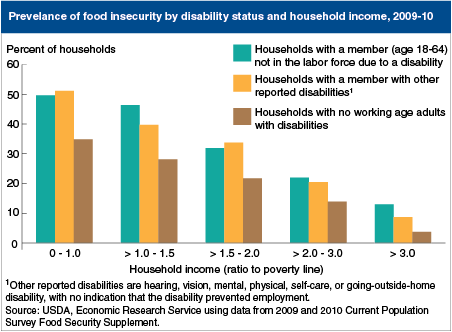Food insecurity more common for households that include adults with disabilities at each income level
- by Economic Research Service
- 5/17/2013

Disability has emerged as one of the strongest known factors that affect household food insecurity. Food-insecure households are those that lack consistent access to adequate food for one or more household members. Because they face higher expenses for health care and adaptive equipment, households affected by disabilities require higher incomes to meet their basic needs than do households without members with disabilities. Even households that have incomes greater than three times the poverty level have a relatively high likelihood of being food insecure if they include an adult with a disability. In 2009-10, an estimated 13 percent of households that included a working-age adult not in the labor force due to a disability, and had incomes at least three times the Federal poverty line ($22,113 for a family of four), were food insecure. About 9 percent of households in that income range with an adult with a non-work-preventing disability were food insecure. In comparison, about 4 percent of households in that income range with no working-age adults with disabilities were food insecure. This chart appears in the May 2013 Amber Waves feature article, “Disability Is an Important Risk Factor for Food Insecurity.”

